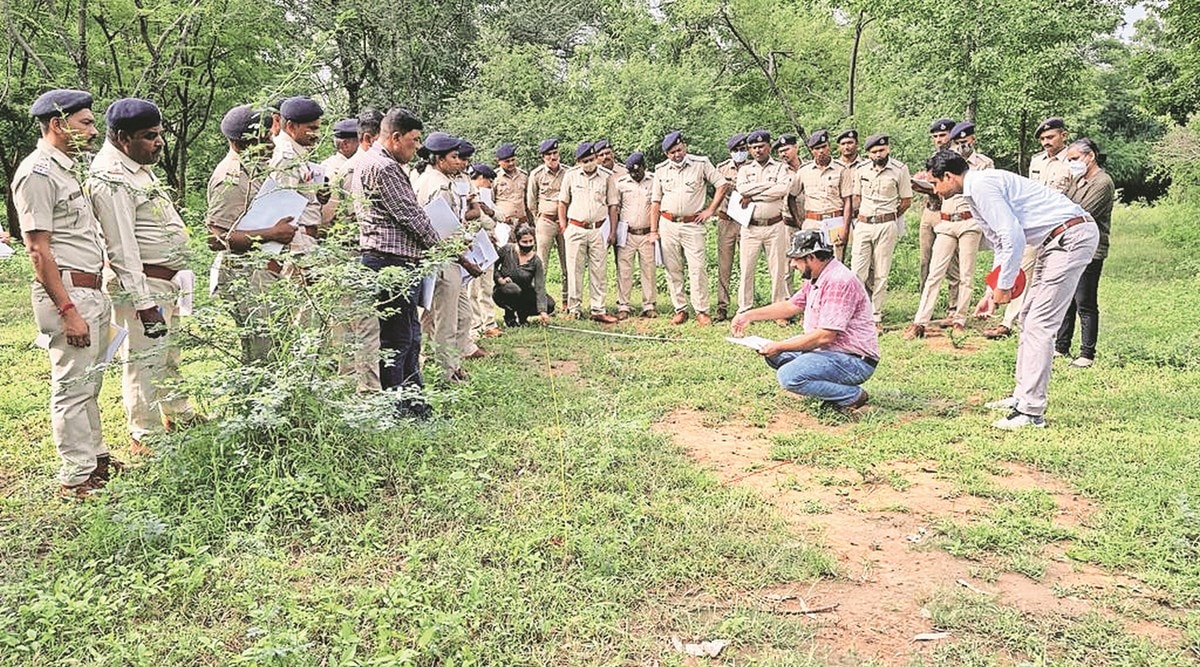The social forestry division of Gujarat forest department has identified agroforestry plantations spread over 11,150.2 hectare (ha) across Anand, Kheda, Mehsana, Panchmahal and Bharuch for the proposed project. These plantations have been done on land belonging to 9,781 farmers living in 948 villages.
WITH AN aim to supplement income of farmers who are into agroforestry, Gujarat Forest department is all set to launch a pilot project to assess the amount of carbon dioxide (CO2) sequestered in around 85 lakh trees in agroforestry plantations in five districts and monitise it by selling it to industries in form of carbon credits and help the latter offset their greenhouse gas (GHG) emissions.
The social forestry division of Gujarat forest department has identified agroforestry plantations spread over 11,150.2 hectare (ha) across Anand, Kheda, Mehsana, Panchmahal and Bharuch for the proposed project. These plantations have been done on land belonging to 9,781 farmers living in 948 villages.
The forest department will implement the project in collaboration with the farmers, New Delhi-based The Energy and Resources Institute (TERI), and VNV Advisory, a Bengaluru-based private firm which specialises in integrated financial models for climate mitigation and adaptations projects.
Ram Kumar, additional principal conservator of forests (social forestry) of Gujarat, said that the project is aimed at supplement farmers’ income. “The carbon sequestration potential of these plantations in these five districts is believed to be around three million tonnes of CO2 equivalent over a crediting period of 10 year. The sale of carbon credits will provide farmers supplementary income while they nurture their agroforestry plantations,” Kumar said.
The annual carbon sequestration capacity of these plantations is estimated to be around three lakh tonnes of CO2, forest officers said.
Marking an important milestone in the project, TERI scientists conducted a two-day workshop on Tuesday and Wednesday in Gandhinagar and Nadiad in Kheda to train officers and employees of the forest department as well as to guide farmers.
The experts trained officers and employees as to how to measure carbon pools in above-ground biomass and below-ground biomass of trees, dead wood, leaf litter, soil organic carbon as well how to analyse data of such pools, use of GPS technology etc.
The farmers who are set to benefit from the project have done the agroforestry plantation by availing government assistance ranging from Rs15 per tree to Rs16,000 per ha over a four-year period. As part of the project, the forest department has shared the data of these plantations done from 2017 onward. Eucalyptus, Malabari neem, teak, gum Arabic (acacia nilotica), tree of heaven are dominant species among the plantations. Eucalyptus accounts for around 51 lakh of 85 lakh trees proposed to be covered under the project, TERI scientists working on the project said.
As part of the project, TERI is in the process of assessing carbon potential of these plantations and preparing project design documents (PDDs) on the basis of that assessment. Once the PDDs are ready, TERI will get the documents and the project registered with Verra, a Washington-based NGO which sets standards and provides quality assurance services in the voluntary carbon market. Verra will then do third-party assessment and inspection of plantations and issue verified emission reduction (VER) worth of carbon sequestered in the plantations. One VER generally means one metric tonnes of CO2 removed from the atmosphere.
“VNV advisory has assured us a base price of six US dollars per VER. This is a very good rate which will mean an additional revenue up to Rs300 per tree per year for farmers,” Siddharth Edake, a fellow with land resources division of TERI and who is involved in the project, told The Indian Express.
For the pilot project, the government and TERI has decided to consider plantations done from 2017 onwards. “This will be a 30-year long project with five-yearly monitsation cycles. Thus, the plantations done in 2017 will be assessed for monitisation in 2022 and carbon credits or VERs will become available for sale,” Edake further said, adding 365 crores of VERs are expected to be available for monetisation in the first cycle.
The second cycle credits will be available in 2027.
“Neither TERI nor the forest department or farmers are putting a single penny in this project. So, it’s a win-win situation,” Edake further said.
Source: Read Full Article


